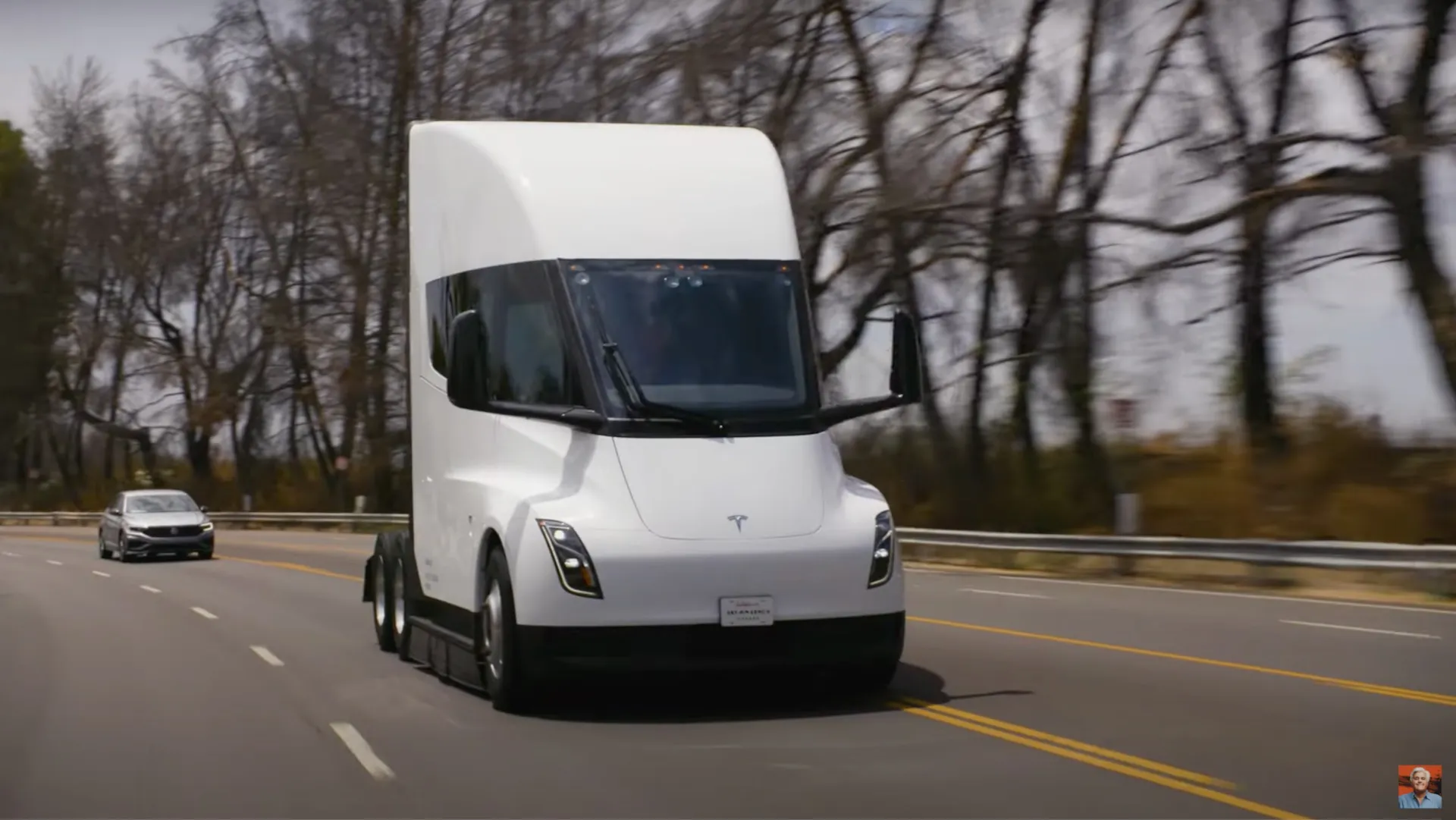Production of the Tesla Semi is underway following the truck’s unveiling in 2017, with the first examples delivered to customers late last year. While he’s not exactly the target customer, Jay Leno recently got to take the battery-powered semi-trailer truck for a spin for the latest episode of his “Jay Leno’s Garage” online series.
The Semi arrived at Leno’s famous California garage accompanied by Tesla design boss Franz von Holzhausen and Tesla senior manager of semi-truck engineering Dan Priestley to explain the genesis of the project.
The idea came from then-CTO JB Straubel (who later left Tesla to start battery-recycling firm Redwood Materials), Priestley explains in the video. Straubel felt that shipping battery packs from Tesla’s Gigafactory plant in Reno, Nevada, to its vehicle plant in Fremont, California, in diesel trucks was contrary to the company’s mission of zero-emission transportation. With encouragement from another Tesla executive who previously worked at truck maker Freightliner, the idea eventually “snowballed” into a production-bound project, Priestley said.
While Tesla has no previous experience with commercial vehicles, and the Semi has some unorthodox design features like a central driver’s seat, von Holzhausen tells Leno the design process was informed by conversations with truck drivers.
The front corners of the Semi were designed to be easily repairable since they’re also the most likely to be damaged. And while the Semi has about the same ride height as a diesel semi truck, designers tried to make it easier to get in an out of the cab—including added suicide doors. Falling off a truck is the number one source of trucker worker’s compensation claims, Priestley said. And that centered driver’s seat allegedly improves visibility.
Tesla advertises 300-mile and 500-mile versions, with energy consumption of less than 2 kwh per mile and DC fast charging that can restore 70% of a truck’s range in 30 minutes. Priestley claims Tesla is using the trucks to haul batteries from Nevada to California on the exact same schedules as diesel trucks. Tesla is also claiming $200,000 in savings over three years from fuel costs alone, which should make the Semi attractive to operators.
A three-motor powertrain can keep the Semi rolling at highway speed limits up a 5% grade, Tesla claims, and propel the truck from 0-60 mph in 20.0 seconds at its maximum 82,000-pound gross weight. Without a trailer behind it, the tractor can sprint from 0 to 60 mph in 5.0 seconds. Those claims aren’t challenged in this test drive, but the Semi does tow another Semi, for a gross weight of about 60,000 to 70,000 lbs.
Production was originally scheduled to start in 2019, but that was pushed back due to limited availability of battery cells, supply chain issues, and the decision to prioritize Model Y production at Tesla’s Texas factory. Tesla announced the start of deliveries in December 2022. Priestley says in the video that 60 to 70 trucks have been built since then. Tesla plans to get feedback and make changes before fully ramping up production, he added. Tesla’s Nevada plant is getting a $3.6 billion upgrade for expanded Semi production.
